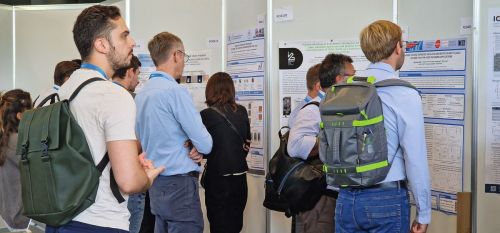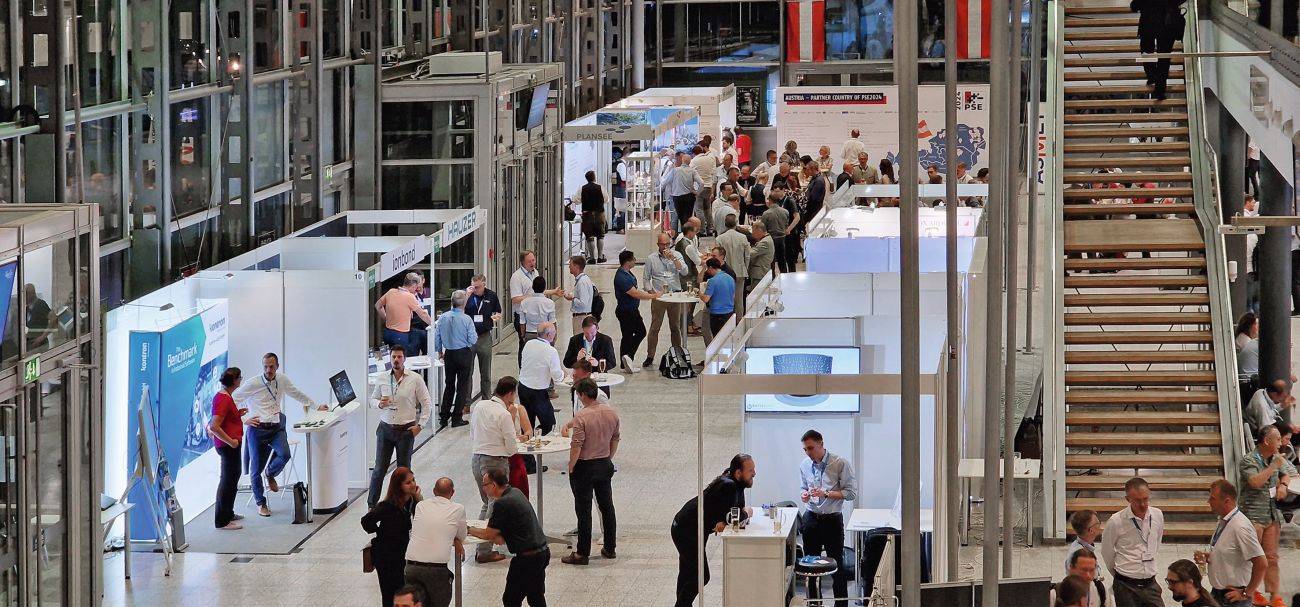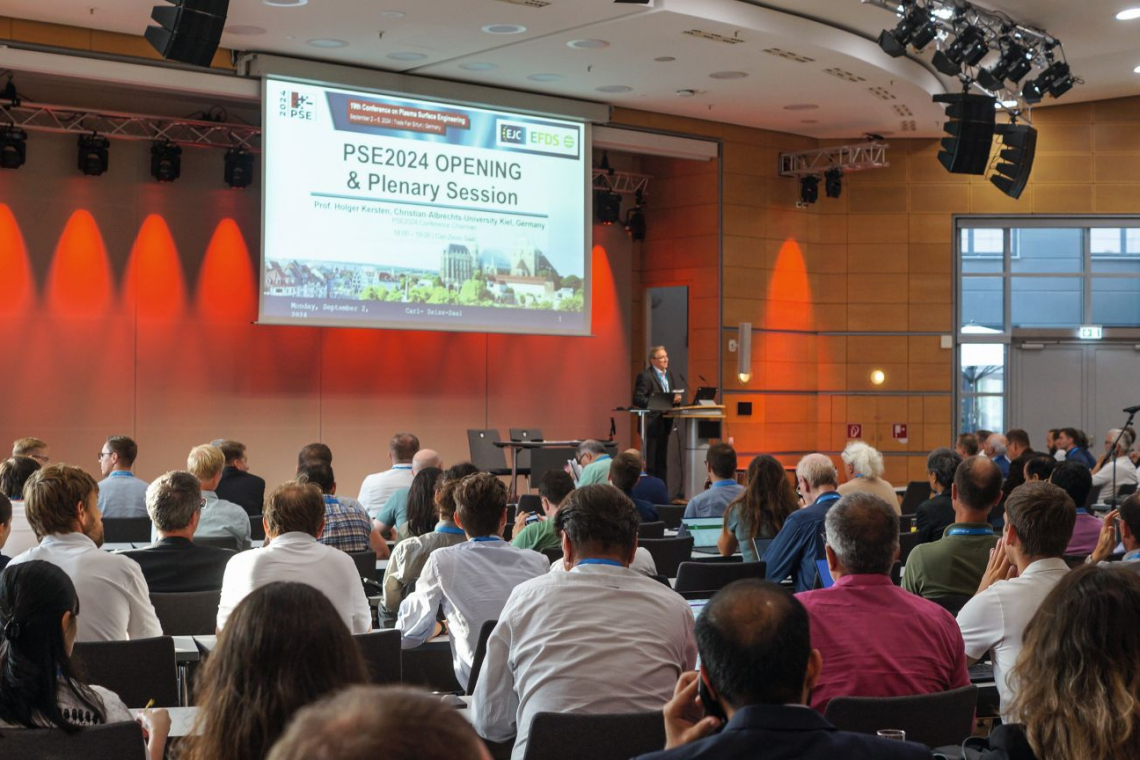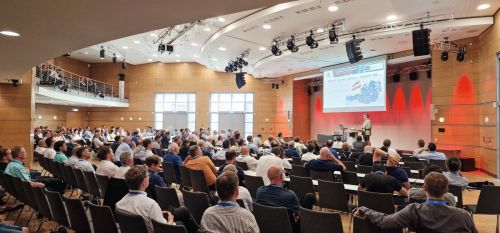The "19th International Conference on Plasma Surface Engineering", PSE 2024, took place from September 2-5, 2024 at the Erfurt Exhibition Center. With 598 participants, 63 exhibitors, 168 presentations and 138 posters, it was very well received. The event offered a broad overview of plasma, ion and particle beam processes. The presentations and posters ranged from the basics to industrial applications.
PSE 2024 was organized by the European Joint Committee on Plasma and Ion Surface Engineering EJC/PISE together with the European Thin Films Research Association and numerous partners from research and industry. Modeling and simulation were discussed as well as new methods for coating deposition and surface modification with the following focal points
- Plasma and ion sources
- Process technologies
- Properties and applications
- Characterization and simulation
- Industrial Workshop: Plasma Surface Engineering enabling Sustainability
- Trend Workshop: Hydrogen Technologies
The conference was accompanied by an industrial exhibition. From September 3-4, 2024, visitors were able to visit numerous companies and institutes from the fields of surface technology, metrology, plant engineering, materials development and manufacturing at their stands and find out about innovative products and services.
In three tutorials, participants were able to refresh or expand their specialist knowledge of the basics of surface technology, process diagnostics and gas conversion. Particularly committed experts were honored with various prizes, such as the PSE Leading Scientist Award and the PSE Early Career Award of the EJC/PISE or the Rudolf Jaeckel Prize of the German Vacuum Society (DVG e.V.) for their dedicated work.
Opportunities to expand the network and make new contacts at the very popular industry evening and the conference dinner were also used extensively. This year's PSE partner country was Austria. The country was also well represented with presentations and posters as well as in the industry exhibition with several stands.
Partner country Austria
After T. Müller, Rübig GmbH & Co. KG, Wels, Austria, had given a brief overview of the scene in Austria (details were subsequently shown at the Partner Country Lounge), C. Mitterer, Montanuniversität Leoben, gave suggestions on how responsible surface engineering can contribute to a sustainable future. In his presentation "Responsible Surface Engineering for a Sustainable Future", he posed the question of whether vacuum processes are really "green", e.g. in terms of energy consumption and material use. Although PVD processes do not use any toxic or environmentally harmful chemicals, they require a lot of energy and sometimes expensive or critical raw materials. The losses during deposition are also high (a lot goes wrong) and the targets cannot be 100% recycled. It must also be questioned whether high-purity and therefore expensive materials need to be used in all applications. The lecturer also recommended that the trend towards multiphase coatings should not be pursued uncritically, but that it should be clarified whether, for example, two-component systems for wear and corrosion protection also fulfill their purpose. Mitterer rounded off his presentation with a few examples, including the use of perovskites for energy storage. The following is a brief report on selected contributions to the industry workshop. Further information on the individual lecture and poster contributions can be obtained from the EFDS or directly from the authors.
The Industrial Workshop
The main topic this year was "Plasma Surface Engineering enabling Sustainability" with the aim of presenting and discussing sustainable technical solutions with a focus on surface technology. The contributions ranged from surface engineering methods, energy-efficient processes, the use of sustainable materials and life cycle considerations to other forms of scientific and technological progress.
 The lectures were complemented by poster presentations
The lectures were complemented by poster presentations
 The exhibition provided an opportunity for networking and information"Carbonbased PVD Coating Solutions for a sustainable Future" - I. Kolev, Hauzer Techno Coating, Venlo, Netherlands, explained that new fields of application are emerging for DLC coatings, in particular hydrogen-free ta-C coatings, such as fuel cells for the generation of "green" energy, cutting and forming tools or heavy-duty components. By adapting the process conditions, the properties of Pulsed-Arc coatings and also the running behavior of surfaces coated with them can be influenced and modified. HiPIMS-ta-C coatings are suitable for highly stressed tools/components, in which case no post-treatment is required. Me-taC coatings are available for industrial use in hydrogen-powered cars. This technology can be easily integrated into existing production lines. Hauzer supplies the necessary process and plant technology.
The exhibition provided an opportunity for networking and information"Carbonbased PVD Coating Solutions for a sustainable Future" - I. Kolev, Hauzer Techno Coating, Venlo, Netherlands, explained that new fields of application are emerging for DLC coatings, in particular hydrogen-free ta-C coatings, such as fuel cells for the generation of "green" energy, cutting and forming tools or heavy-duty components. By adapting the process conditions, the properties of Pulsed-Arc coatings and also the running behavior of surfaces coated with them can be influenced and modified. HiPIMS-ta-C coatings are suitable for highly stressed tools/components, in which case no post-treatment is required. Me-taC coatings are available for industrial use in hydrogen-powered cars. This technology can be easily integrated into existing production lines. Hauzer supplies the necessary process and plant technology.
"Sustainable and Economical Production of High-Quality HiPIMS Coatings" -Stefan Bolz, CemeCon AG, Würselen, informed the audience that the high degree of ionization of HiPIMS processes enables the coating of geometrically complex components, the deposition of smooth layers without pre- and post-treatment and the coating of micro-tools with very small diameters. In contrast to the arc process, interfering droplets do not occur, which makes pre- and/or post-treatment unnecessary in many cases. This saves time, costs and energy and therefore achieves a high level of sustainability.
"PVD Coatings for Lightweight Proton-Exchange Fuel Cell (PEMFC) Bipolar Plates" - Parnia Navabpour, Teer Coatings Limited, Droitwich, UK, presented newly developed PVD coatings for the protection of PEMFC bipolar plates. The graphite-iC coating process is a 4-step process with the process steps of ion cleaning, deposition of a thin chromium or titanium layer, deposition of the Me/C gradient layer and the carbon top layer. As aluminum bipolar plates tend to corrode, they can be successfully protected by this coating system. Work is also underway to protect bipolar plates for fuel cells at higher temperatures.
"PVD Coatings for Hydrogen Applications and their Commercial Realization" - Klaus Böbel, Oerlikon Surface Solutions AG from Balzers, spoke on this topic. Hydrogen as an energy source will play an important role in terms of environmental protection and sustainability. Due to their high permeability and low lubricity, bipolar plates of fuel cells or electrolyzers require barrier layers that must be stable against electrochemical or temperature stress. Interface contact and corrosion current can be perfectly controlled by precious metal layers or plasma spray coatings as thermal or electrical insulating layers, but these are very expensive. Newly developed PVD coating systems and the necessary equipment and measurement technology are being investigated as an inexpensive alternative. The speaker presented examples of their commercial use.
"Development of an Atmospheric Pressure Plasma Reduction Inline Process as Green Alternative to solve Delamination and improve Bonding in Electronics" In the production of electronic components, different material components are often exposed to high thermal and mechanical stresses. Metals such as copper are oxidized on the surface, which can lead to delamination in the material composite. D. Bensalem, Plasmatreat GmbH, Steinhagen, presented the new, inline-capable and environmentally friendly redox tool from Plasmatreat as an alternative to previously used chemicals. This consists of three different sections in a controlled nitrogen atmosphere, the preheating zone, the plasma treatment zone and the cooling zone. A gas mixture of hydrogen and nitrogen in the rotating plasma jet enables effective removal of oxide layers. Bensalem demonstrated the possibilities of the new process using examples and also provided information on the plasma parameters required to achieve optimum adhesion.
Date:
The 20th PSE will take place again in Erfurt from August 31 to September 3, 2026.



